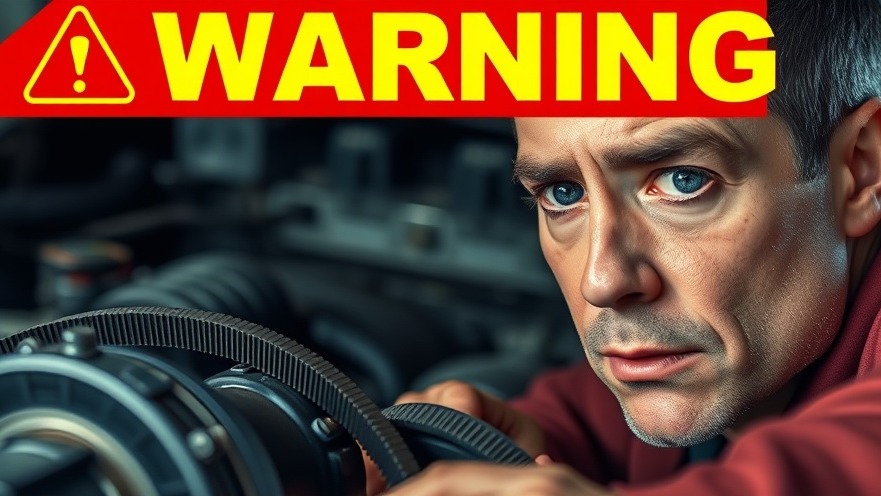
Recognizing the Signs: Your Vehicle's Serpentine Belt
Your car’s serpentine belt may seem like a minor component, but it's a crucial part of your vehicle's functionality. If you’ve noticed a strange noise coming from under the hood, it could be a warning sign that your serpentine belt needs attention. Understanding the symptoms of a failing belt can save you from larger repair costs down the road.
In 'Don't Skip This! These are the Signs a Serpentine Belt Needs to Be Replaced in Your Car or Truck', we delve into crucial symptoms and maintenance tips concerning your vehicle's serpentine belt that every car owner should know.
The Importance of Regular Inspections
Many car owners overlook routine inspections of the serpentine belt. However, experts recommend checking for visible signs of wear regularly. Cracks, splits, or a shiny appearance on the belt indicate deterioration. Ideally, belts should be replaced proactively as part of your vehicle maintenance routine to avoid unexpected breakdowns.
Common Signs of a Failing Serpentine Belt
When inspecting your serpentine belt, keep an eye out for certain warning signs. These include:
Noises: A squealing noise often points to a worn belt.
Cracks or Splits: Several cracks within an inch are a sure sign of trouble.
Unable to Wiggle: If the tensioner feels stiff or breaks free, it may be time for a replacement.
Not addressing these signs can lead to the failure of additional components such as the water pump or the alternator, setting you up for a more expensive repair.
Understanding the Mechanics Behind the Belt
The serpentine belt is responsible for running multiple engine accessories. If the belt fails, it can lead to loss of power steering, overheating, and even battery issues. It’s essential that when you change the belt, you also inspect the tensioner and pulleys to prevent further damage caused by excessive pressure or leaks.
Preventive Measures and Best Practices
So, what can you do to keep your serpentine belt in tip-top shape? Regular maintenance is key. Here are some practical tips:
Schedule Routine Check-ups: Having a trusted mechanic check your belt periodically can catch issues early.
Choose Quality Parts: When it’s time to replace the belt, consider getting a kit including a new tensioner and pulleys from reputable brands.
Check for Fluid Leaks: Address any oil leaks immediately, as they can significantly reduce the lifespan of the serpentine belt.
By following these precautions, vehicle owners can prolong the life of their serpentine belt and ensure smoother running conditions for their vehicles.
Concluding with Confidence
Understanding the function and importance of your vehicle's serpentine belt is crucial for maintaining your transportation. If you notice any signs of wear or hear unusual sounds, don't ignore them. A simple inspection could save you from costly repairs down the line.
For reliable parts and kits tailored for your needs, consider resources like oneauto.com. Detecting small issues before they escalate is key to keeping your vehicle running efficiently.
Remember, your vehicle's longevity depends on your proactive maintenance efforts. Don't wait until it's too late!
 Add Row
Add Row  Add
Add 




Write A Comment